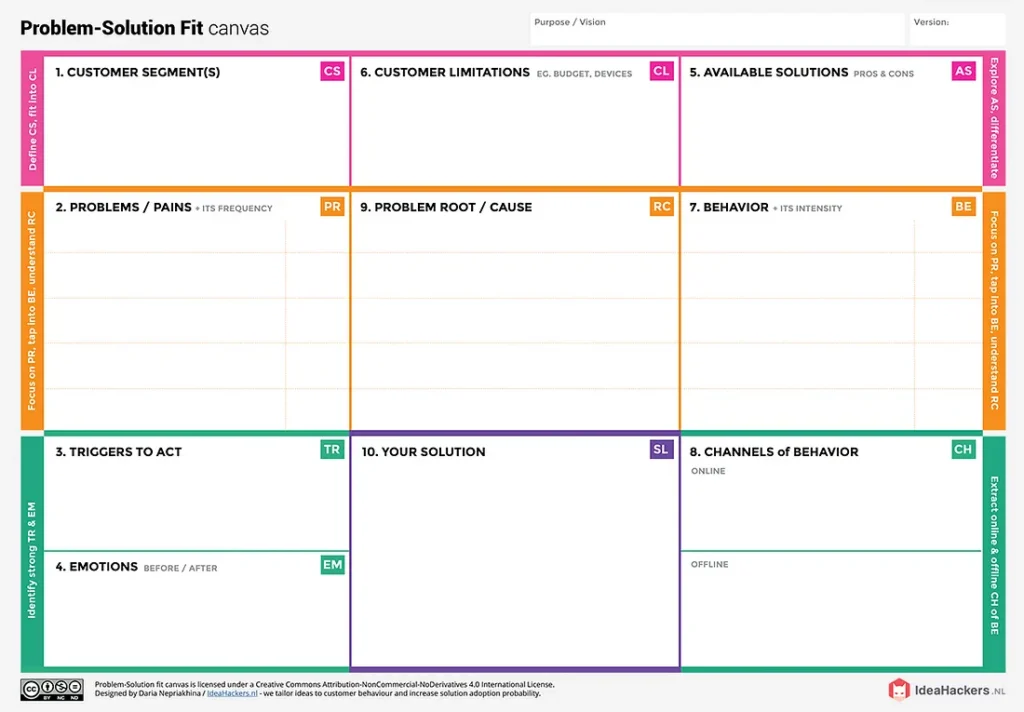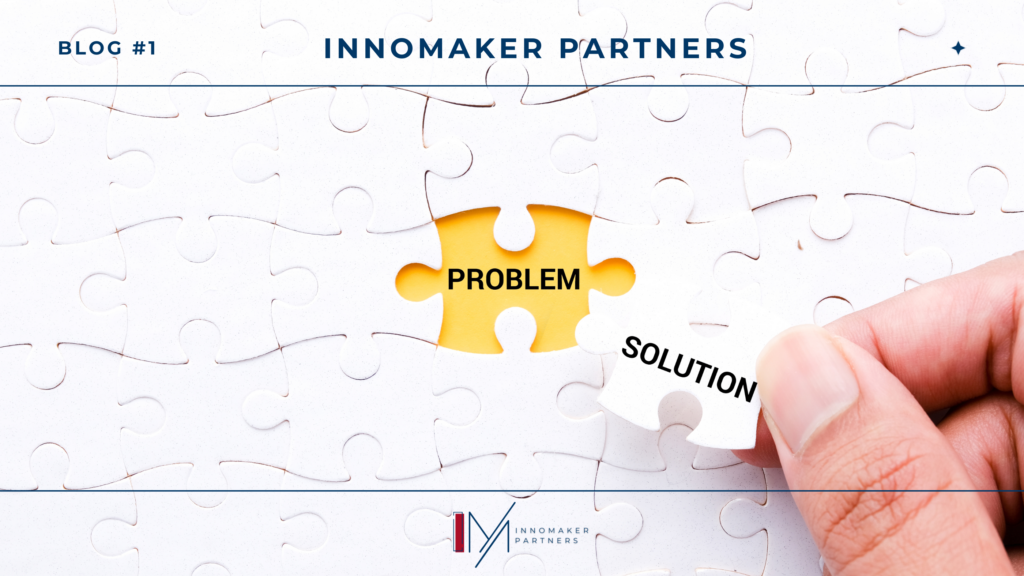Our goal is to help you understand and master the network of concepts and methods inevitable for startups within the ecosystem. We begin with Problem-Solution Fit (PSF), which is one of the most important factors for early-stage startups before entering the market.
What is Problem-Solution Fit?
Problem-Solution Fit (PSF) can be a critical point when launching a startup, especially in the seed and pre-seed phases. During this time, the startup’s focus must be on identifying and understanding customers‘ problems to create a product that precisely meets their needs. In the implementation process, the startup works closely with a small group of its customers to ensure up close that the product they develop provides an effective solution to the target group’s problems. PSF is achieved when the solution offered by the startup solves the emerging problem, but also when customers are willing to purchase the product, investing their money and energy into it. This indicates that the problem is worth solving and that there is a paying demand for the solution. Naturally, everyone might have some bias regarding their own product, so objectivity is crucial. We’ve done our best work if, in the end, we receive a clear yes or no answer as the result of the PSF.
Why is Problem-Solution Fit important?
Problem-Solutin Fit allows startups to substantiate their customers’ problems with real data, making it easier to understand these issues and reducing the risk of the product being unnecessary in the market.
Therefore identifying essential functions and aspects early in the product development process is crucial. It helps avoid wasting time and energy on features that customers do not desire. Instead, startups can focus on factors that provide real added value.
In general, customer satisfaction and loyalty are earned by products that can effectively address a significant problem. Customers are more likely to use a product that offers an efficient solution to their issue.
Furthermore, presenting PSF is often a prerequisite for investments. Before making significant investments, investors want to see that the created product has real market demand, which the startup can meet, thereby becoming capable of potential growth.
Without PSF, a startup risks investing money, time, and other resources into a product that does not satisfy either the customers’ needs or the investors’ requirements.
How can startups reach Problem-Solution Fit?
To achieve an appropriate Problem-Solution Fit, it is necessary to gather feedback from potential customers. Methods such as interviews, surveys, and prototype testing can be used for this purpose. It is important to keep in mind that PSF validates two aspects: first, whether the problem identified by the startup actually exists and needs solving; and second, whether the proposed solution fully addresses the problem. The methods used are crucial because theoretical approaches alone are not enough; practical results lead to successful solutions. The Problem-Solution Fit Canvas can help organize and visualize the results obtained.

Interviews allow for in-depth understanding and direct feedback on the customers’ experiences and needs. Surveys can collect a broader range of data from a larger audience, providing quantitative insights. Prototype testing involves customers interacting with early versions of the product, giving real-time feedback on its functionality and effectiveness.
By systematically applying these methods and analyzing the data, startups can ensure they are developing a product that meets real customer needs and has market viability.
Factors to pay attention to:
Competitors: Understanding the strengths and weaknesses of solutions created by potential competitors is crucial in developing your own solution. This helps in identifying unique value propositions and areas for improvement.
Market Size and Growth Potential: Knowing the characteristics of the market is an important factor in shaping the solution according to demand. Analyzing market trends, customer segments, and potential for expansion ensures that your solution can scale effectively.
Cost-Benefit Analysis: This helps measure consumer satisfaction and the potential revenue derived from it, as well as the costs of further development. It is essential for evaluating the economic feasibility of your solution and ensuring sustainable growth.
Minimum Viable Product (MVP): Creating an early, viable version of the product is a perfect test subject for PSF. An MVP allows you to validate your assumptions with real users, gather feedback, and make necessary adjustments before a full-scale launch.
Tips and advice:
Identify and understand the problem!
From the Consumers' Perspective: Analyze their demographics, behaviors, and needs. The more specific you are, the easier it will be to develop the solution.
Dig Deep!
Talk to customers and ask them about their biggest challenges and previous solutions related to the problem. Focus on the minute details of their grievances.
Observe Alternative Solutions!
Your competitors may not only be direct competitors but also consumer behaviors such as doing nothing. Understand why they might prefer these alternatives.
Form and Test Your Hypotheses!
Develop hypotheses about how your solution will address the identified problem, then test these hypotheses. Use methods such as surveys, interviews, or prototype analysis.
Examples of Problem-Solution Fit in some popular businesses today:
Uber and Transportation: Problem: In cities, finding a taxi during peak hours takes a lot of time and is frustrating. The Uber app provides a solution by connecting passengers with drivers, showing the nearest and best ride options, thereby making travel more convenient.
Airbnb and Accommodation: Problem: Travelers going on vacation, especially during the summer, often face limited availability and expensive hotels. Airbnb created a platform to overcome this, allowing users to easily rent out their vacation homes or guest rooms at affordable prices.
Netflix and the Entertainment Industry: Problem: Cable TV subscriptions are expensive, and the available content is limited. Netflix, as a streaming service, offers easily accessible, diverse, and new content to users at an affordable price.
From Problem-Solution Fit to the market
Once you’ve found your Problem–Solution Fit, the next challenge is turning validation into traction. To grow, you need to communicate your solution clearly, position it effectively, and reach the right audience. Our CMO Partner service helps startups bridge this gap, transforming a proven concept into a scalable go-to-market strategy, strong brand positioning, and consistent messagin.



